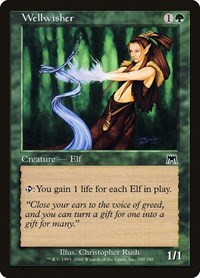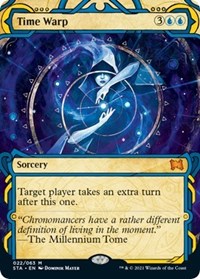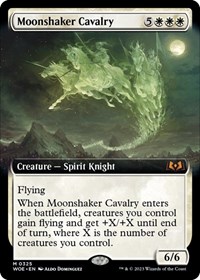Doug's Dungeon - Carcassonne
Hey all, Doug here back with another Doug’s Dungeon. This fortnight, Hobbymaster’s theme is ‘Family’ games, but before I get to my choice I thought I’d go ahead and read some fan mail.
“Doug it’s been 2 weeks” I KNOW RIGHT! They even went as far as to write it on parchment, roll it up and seal it with an image of a red meeple- … oh wait.
This isn’t fan mail.
*Unfurls scroll*
To Douglas, House Moore, my most loathed of rivals,
I write to you with a question. Do you take me for a common fool? There I was, strolling the ramparts of my new city-to-be. My magnum opus. My legacy. When lo and behold, not a few hundred yards from the unfinished frontier of my fair town, I spied a shoddy, mud-soaked pile of buildings and walls flying YOUR banner, making tracks to join onto MY city. MY. CITY. If you think for one moment… ONE MOMENT that you will be credited AT ALL with the completion of my project, then you are sorely… SORELY mistaken. Mark my words, Moore. As I write this, my architects are working on closing off the walls ahead of schedule, completing my grand work. Perhaps when I finish, I will place a plaque upon the wall. ‘Behold the wastes of Moore’ it will read. ‘Be warned ye who cross House Redmeeple’. The tourists will love it.
I look forward to seeing the look on your face when I lay the final brick.
Disdainfully yours,
Florence,
House Redmeeple.
P.S. I have just been informed that you have just completed a road that leaves Bracktown, travels for 500 miles in an enormous loop without intersecting or diverging toward ANYTHING, and ends right where it began. You are either the most stupid man alive, or are simply bringing shame to the title of land baron in some... vain attempt to phase me. Either way, I truly hate you.
Hmm.
I should probably mention that I’m halfway through a game of this week’s topic, Carcassonne. In this title by Z-Man Games, a group of 2 to 5 players place tiles and ‘meeple’ tokens which score points to win the game. I chose Carcassonne this week as it ticks all the boxes for me as a family game. It’s simple. It’s easy to teach and play. It has depth. Most of all, Carcassonne is just really, really fun for players of all ages and gaming backgrounds.
In order to play a round of Carcassonne, each player is given a set of people-shaped tokens called ‘Meeple’. Meeple. I want you to really get used to that word before we begin. *Meeple*. And that’s singular, too. It’s not one ‘Merson’ or anything, I’m talking one MEEPLE, a thousand MEEPLE. ANYWAY, A stack of tiles depicting the landscape of Carcassonne is placed, face-down, within reach of all players. Finally, the ‘starting tile’ is placed in the centre of the table, and play begins. Setup time is very quick, and rarely will you run out of space when playing, even on a more modest table size... *Glares at my own inadequate table*.
The first player draws a tile from the stack, and places it face-up next to the starting tile. One must bear in mind that any tile placed must have matching scenery to the tiles it is placed next to. The important parts to look at are cities within walls, roads, and monasteries. These features are the ones that will score you those scrumptious, moist points. After the tile is placed, the player may choose to place one of their meeple tokens on it. The meeple must be placed on either a road, a city, or a monastery within the tile. As a small flavor note, these meeple become employed as highwaymen, knights and monks respectively as long as they remain on the tile. That’s right, architect. You are directly responsible for whether or not the -meeple- will put -mood- on their -minner- -mable- for their -mamily- to -meat-. The next player takes their turn placing a tile next to the existing ones, then choosing to place a meeple. Play continues in this fashion until the stack of tiles runs out, when the game ends.
The meeple that is placed will remain on the tile until it’s assigned feature is completed. When that happens, the Meeple gets laid off with a severance package and a signed card from all the other staff. Even Greg signs it, saying “Don’t fall down any more stairs Ted!” Ha! Classic Greg. A city is completed when its walls are closed off in a loop, with no empty gaps within. Roads are finished when their ends either connect or run into hamlets or city entrances. Monasteries are a whole different issue, however. To complete one, the Monastery tile must become surrounded by tiles, forming a 3 by 3 grid with the Monastery at its centre. Completing a road nets 1 point per tile the road travels through. Cities give 2 points per tile they inhabit (Tiles with a ‘Coat of Arms’ shield are worth double). Monasteries that become fully encased by tiles net a glorious 9 points!
Completing structures and roads is a valuable move to make beyond the points, as you only have so many meeples to place on the board at any time. Having one or two meeple on standby in case you draw a Monastery can give you the winning edge. But that’s not the only reason to hold ‘tactical meeple’. (I’d like you to note real quick that you are reading an article that is genuinely wanting you to absorb the term ‘tactical meeple’). You see, points for a feature are not granted to the player who started it, but are given to whomever has the most meeple in it when it is finished. Now I should note that, when you add to a road or city that has a meeple, you can not place another meeple within that feature, as it is already guarded (even if it is guarded by you!). HOWEVER, you can always start a ‘new’ road or city nearby, place a meeple on it, and then build your way over to connect to another player’s feature. This is a fantastic strategy to pull off, because if the feature completes with you and another player tieing for meeple in it, you BOTH get the points for it. And if you manage to muscle your opponents out with extra meeple? DAYLIGHT ROBBERY MY FRIEND. So keep those tactical meeple at the ready.
Another strategy to learn is to leverage your opponent’s desires against them. People like to build their roads. They like to build their cities. And sure enough, they want to surround their monasteries. One of my favourite things to do is to simply tie for meeple on roads and cities, as my opponents will still want to finish them. Why steal their points when you can use THEIR TURNS to earn them? Monasteries are best placed next to unfinished features (even other unfinished monasteries), forcing players to build around them. It’s plays like these that reveal Carcassonne’s true depth. Depth that one could not initially glean from the very simple turn structure. And the game only gets deeper once you begin using it’s expansion packs.
My copy of Carcassonne (and ones you will find on the shelves at Hobbymaster... *wink*) carry not only the base game, but also two of its expansions; The River, and the Abbot. Playing a game with the river expansion replaces the starting tile with a new set of tiles. These tiles feature parts of a river, that starts at a source and ends at a lake. Players will start with the source tile on the board and draw from the face-down pile of river cards, adding to the river and even placing meeple on riverside cities, roads and a monastery. Once the river is complete, play continues with the regular ol’ land-locked tiles. The river adds a more varied early-game board state, making each game vastly more different than the already high-variance base game.
The Abbot, when applied to the game, replaces one of each player’s meeple with a unique priestly token that can only occupy monasteries or the flower gardens present in certain tiles. Abbots treat garden tiles as a monastery, and can be removed before completing them for early points. This makes them the grizzled squad commander among tactical meeple. Finally, the box comes with the farmer rule, which is honestly only for people who can do the whole rain man floating algebra thing. You place a meeple side-on in an open field, and only scores points if the field becomes fully enclosed by cities. To date, I have been too intimidated by this rule to get my head around it.
Whether or not you choose to use the extra pieces and rules, I highly recommend Carcassonne. The simplicity of the turn structure makes it one of the most approachable games around, and its depth keeps players invested, while attracting a more experienced crowd. If you need a game for your collection to play with family, friends ranging over different experience levels, or just want to escape the monotony of monopoly *shudder*, then I ask you to consider Carcassonne as your next purchase. At the time of writing this, there are several expansions to grab as well, with Hobbymaster stocking the base game, the Inns and Traders expansions as well as the Winter, Goldrush, South Seas and Hunters variants.
I’ll leave it there guys. I hope you have as much fun playing Carcassonne as I’ve had writing about it. As for me, there’s a little something I gotta take care of…
The dungeon doors swing open, revealing a hastily put together construction site. Doug barks orders at laborers as they work ravenously to fill in gaps between walls of two merging cities. Not far away, a plump man stands atop the ramparts of the far walls. He does not look happy.
Don't own Carcassonne yet? No problem, you can find it on our webstore here.

Doug Moore

I'm an avid lover of all things table top. I also have a growing collection of board games which inspire me to create my own. I put my loud and expressive personality to good use as a dungeon master for my friends, having run many campaigns through 4th and 5th edition D&D.
Follow him on Twitter
@Dugggernaut















